Review for Nura: Rise of the Yokai Clan - Season 1 Part 1
Introduction
The supernatural appears to permeate Japanese culture. There are shrines everywhere, every locality has its own deity, and all manner of sprites, demons, tricksters and monsters have tales written about them. There are small gods all over, and it’s an aspect of culture that quite understandably is reflected in many anime shows as well. If you watch a typical supernatural anime series, you’ll invariably find an otherworldly creature that you’ve never seen in any other anime, and sometimes you’ll see them in other genres as well. There are just so many that you’d never expect to see them all in one place. Then Nura: Rise of the Yokai Clan comes along, and somehow manages to cram in all manner of beasties to such a degree as you have never seen. After all, its protagonist is the heir to the Yokai Clan, destined to lead the Night Parade of 100 Demons. Nura: Rise of the Yokai Clan is one of the shorter shonen anime shows, of the same ilk as Naruto and Bleach, but running to ‘only’ 52 episodes in length. Once again we encounter a young boy with hidden powers and a terrifying destiny, and the battles that he will face to fulfil his potential.
Rikuo Nura just wants to be a normal, everyday high school student. It’s a laudable goal, and given that he’s pretty average looking, short of stature and wearing glasses, it also would seem to be supremely achievable. The only problem is that Rikuo is only three-quarters human. From his grandfather’s side, he’s inherited Yokai blood. He lives with his grandfather in the clan holdings, and is expected by all of his clan to inherit the position of clan leader, The Lord of Pandemonium, Nurarihyon, destined to lead the Night Parade of 100 Demons. It also doesn’t help that at times of stress during the night hours, he can transform into his yokai form, a tall, elegant, bad-ass sword-wielding yokai. So his days at school are spent keeping his supernatural heritage secret, which isn’t easy as his friends are nuts about the paranormal, always trying to drag him into yokai hunts. It gets worse when a transfer student from Kyoto arrives, and turns out to be an heir to Onmyoji mysticism, and able to summon paper charms with which to hunt demons, i.e. Rikuo’s clan. But all of this is as nothing compared to Rikuo’s home life, as his inheritance of the position of clan leader is far from certain, and inter-clan rivalries have a tendency to spill into bloodshed. And Rikuo’s poor, unwitting human friends are liable to be drawn right into the middle.
The first thirteen episodes of Nura: Rise of the Yokai Clan are presented across three discs by Kazé Entertainment, and distributed by Manga Entertainment.
Disc 1
1. Becoming the Lord of Pandemonium
2. Poison Wings Flutter in the Bamboo Thicket
3. Yura Keikain and the Kiyojuji Paranormal Patrol
4. The Rat of Darkness Devours the Cat
5. Red Plum Blossoms on the Demons’ Mountain
Disc 2
6. A Trap is Set on the Evil Mountain
7. Darkness Moves on the Night of the New Moon
8. Tragic Umewakamaru!
9. Gyuki’s Beloved Nura Clan
Disc 3
10. The Demon Mirror Devours the Fruit
11. The Vanguard Wind Blows from the West
12. Tamazuki and the Seven Shadows
13. Lord Gyuki’s Rebellion: The Whole Story
Picture
Nura: Rise of the Yokai Clan gets a 1.78:1 anamorphic transfer, which looks pretty good on these discs, if you press pause. The image looks as if it’s been sourced from an HD master (Nura is being released on Blu-ray by Viz in the US), as it’s extremely well detailed, with strong colours, and makes full use of the PAL resolution, with few compression artefacts visible during playback. The character designs are pretty generic, even taking into account the menagerie of supernatural beasties that star in the show, while as a shonen anime; it’s hardly the most vibrant animation going. It does just enough to tell the story, and little more.
It’s just when press play that it becomes clear that Kazé have given Nura: Rise of the Yokai Clan the worst possible DVD transfer. It is afflicted with constant and severe judder. It’s all down to NTSC versus PAL, or rather 24 frames per second playback versus PAL (as NTSC takes us into realms of 30fps and 2:3 pull down which isn’t relevant here). For a long time now, all cinema, and all animated media has been made to be viewed at 24 frames per second. As a legacy of our electricity system, alternating current at 50Hz, our CRT TVs were designed to display media at 25 frames per second. That has meant one of two things. We get PAL speed-up, in which the source material is just displayed at a native 25fps, 4% faster than intended, or we get NTSC-PAL conversion, which result in a lot of interpolation, blended frames, occasional judder, and lower resolution. Anime used to be transferred as NTSC-PAL before the advent of Blu-ray, which effectively maintained the original frame rate, although it never looked great, but it maintained the original audio. Nowadays, anime is usually released as native PAL, sourced from HD masters so that it takes advantage of the higher resolution PAL has over NTSC. But it is 4% faster than intended, resulting in higher pitched audio (for which pitch correction is available, but if poorly applied can cause other issues).
There is a rarely used, third way which is the worst of all the options, and it is this option that has been used for Nura. To maintain the original audio, and the original run time, while keeping the higher resolution of PAL as sourced from HD masters, it is played back with every 24th frame repeated to create the 25th frame necessary for PAL. No interpolation and smoothing as in NTSC-PAL conversion required. Every 24 frames you get the same image twice. In a static scene, you won’t notice it. If there is constant motion on screen, whether it is panning or scrolling or indeed the swaying of blossoms in this show’s eyecatch, then that motion will jerk, once a second, as a frame is repeated. Nura: Rise of the Yokai Clan is a shonen anime, the kind of anime where the creators save on the budget by panning over static images. Nura is a relatively cheap shonen anime. It is all panning and scrolling. There is so much judder here that it is liable to make you queasy.
Sound
Audio comes in the form of DD 2.0 Surround English and Japanese, with a translated subtitle track for the Japanese audio. There is a second subtitle stream that is locked on during playback in English, presumably for captions, but in the one episode that I did sample, episode 9, not one caption was translated. I may have picked the wrong episode, but certainly neither the episode title nor the title in the next episode preview received caption translations, which at the very least should have been visible. Nura: Rise of the Yokai Clan isn’t a dialogue intense show, so there are more gaps for caption translations to be visible on screen, as once more Kazé are unable to show subtitles and caption translations simultaneously. Only a few bits of background text go by un-translated in the subtitle stream accompanying the Japanese audio. As is normal practice for Kazé, the disc is wholly locked during playback.
The dialogue is clear throughout, the action gets a fair bit of stereo space to it, and the music comes across well. The theme songs get the toes tapping, particularly the end theme, but the incidental music is a little derivative, and I kept hearing Harry Potter in there. The Japanese audio is acceptable enough, but oddly lifeless, particularly in the case of Night Rikuo. In comparison, the English dub, while just as generic as the average English dub, does at least keep my eyes open (and twitching in time to that judder).
Extras
You get animated menus, and each disc begins with trailers for Code Geass Season 1, and Persona 4: The Animation, but that is your lot. If you want extra features with your Nura, you’ll have to look to Region 1, and the US Viz release.
Conclusion
There was a time when long running anime shows, and in particular the long running shonen anime genre, the shows that appeal to young pre-teen and teen males, just didn’t work in the UK. Single volume discs of shows that run into hundreds of episodes just don’t sell in a market where there are only a few thousand customers. Manga Entertainment actually pioneered the boxset model for such anime shows, and proved with Naruto that long running anime could sell in the UK. However that small customer base is still a factor. Naruto has since been joined by Bleach, and most recently Dragon Ball Z. Later this year, the biggest shonen anime of all, One Piece will debut in the UK, and by the end of this year the brilliant Fairy Tail series should return as well. It’s fair to say that the market for shonen anime is well and truly saturated.
Against this backdrop, if you want to release another shonen show, with young teen male heroes strutting their stuff in variations of combat tournaments, with levelling up of powers, that show, even a shorter one with a finite episode run, will have to be something special indeed. In a market full of big hitters, you need something like Fullmetal Alchemist or Soul Eater to succeed. The last thing you want is another D. Gray Man, or Samurai Deeper Kyo. Nura: Rise of the Yokai Clan is no D. Gray Man. It’s worse. It’s been a long time since I’ve slept through a more tedious, dull, and pointless use of disc space, but this is a show that try as I might, I could find no redeeming value in it at all. In fact, this is my second time watching this show, after the first season was initially streamed on Anime on Demand, and the repeat viewing does it no favours. The first time I watched it, there was a little hope that the show might pick up in the next episode, it might suddenly decide to entertain me, but this time, I knew full well what was coming, and it was the rare episode that I didn’t have to skip back to watch the bit again that I had just snoozed through.
You’d think that with a premise such as Nura’s, that of a part-Yokai having to hide his supernatural heritage from his high school friends, there would be a lot of scope for Negima like high school antics, but there is only a little of that at the start of the show. You’d also think that with a premise where the supernatural world meets the modern world, there would be plenty of scope for spooky happenings, and chilling storylines, but again there is only a little of that, and again at the start of the show. Instead the show focuses on Rikuo Nura’s destiny to become leader of the Nura clan, and lead the Night Parade. It’s a position he initially refuses, but over the course of these first thirteen episodes becomes prepared to accept. Rikuo comes in two forms, by day a short bespectacled high school student, and by night a tall, ‘cool’, sword wielding badass demon. With the sword wielder unveiled, you might think that there will be a lot of one-on-one combat, a lot of succeeding through superior willpower, a whole lot of levelling up. And there is a bit of that too.
However, with the potential for the comedy and farce neglected, the supernatural sidelined, and the shonen action minimised, it soon becomes clear what Nura: Rise of the Yokai Clan is really about. It’s about bringing feudal era clan loyalties and politicking to the modern age. While you might not get away with doing a story about liege lords and vassals, oaths of loyalty and betrayals in a modern setting with humans, you can do what you like with demons. Certain factions inside the Nura clan want Rikuo to be leader, certain factions don’t. Other clans from the outside want to interfere, and take over... It’s a whole lot of to-ing and fro-ing that I just don’t have the time for.
Worst of all is the pacing. It’s ridiculously slow at the best of times, but when you expect there to be action, for the pace to pick up, for the show to energise the viewer, it will sap the energy out of the story instead. Right at a climactic moment during one battle, with swords a-swinging, blood about to be spilled, and the victor realised, the show stops for a whole episode of flashback to explain the motives of the antagonist, before resuming an episode later for the sword strokes to connect. It’s bad on this DVD. Can you imagine what it was like watching one episode a week, streamed online? Also at the end of this collection of episodes, the pace about to pick up, the new villains revealed, and the stakes of the story raised, it all stops at episode 13 for 20 minutes of recap of episodes 5 to 9. The episode title too is deceptive, “Lord Gyuki’s Rebellion: The Whole Story” suggests that there was a side to the story that was never originally revealed. Instead it’s just a straight up recap.
There are moments that do appeal. The first episode does promise much of what the series fails to deliver, and against the sheer character overload of this series, certain characters do shine. I certainly like Yuki-Onna, and while potential love-interest for Rikuo, Kana fails to make an impact, the Onmyouji Yura certainly has more personality. The school friends in general, with their Scooby gang investigating various occurrences of Yokai do offer some much needed comic relief, even if they fail to make enough of an impact for me to even recall their names. But episodes 4 to 9 are all feudal politicking, cloaked behind a shonen action veneer. Episode 10 is actually a rare moment of spookiness in a show about monsters and demons, and is the one episode in this collection that I actually stayed awake for. The following three episodes set up the next challenge in clan rivalries for Rikuo, but these villains are a lot more interesting, comparatively speaking that is, than Gyuki. By this point the show was beginning to climb up towards mediocrity in my opinion, but this was let down yet again by an utterly needless recap episode.
I think it is painfully evident at this point that I am no fan of Nura: Rise of the Yokai Clan, and in a market that is saturated with shows of its particular sub-genre, it really is an unnecessary release. Of course if you are a fan of the show, and came here for validation of your opinion, then this is the wrong place to look. However I must say this. If you want Nura: Rise of the Yokai Clan on DVD, then this is not the one to get. If I paid for a DVD and got a transfer as flawed as the one that Kazé have given this show, I would return it as faulty. Fortunately, there is a Region 1 alternative, as Viz Media are releasing Nura to US fans on NTSC DVD. It’s hard to walk ten yards in the UK without tripping over a multi-region capable DVD player, and Viz’ release apparently has extra features too. This release has nothing. While multi-region Blu-ray players are a little harder to come by, the US will also get Nura in high definition.
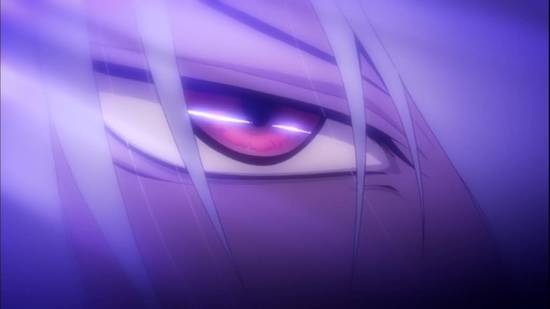
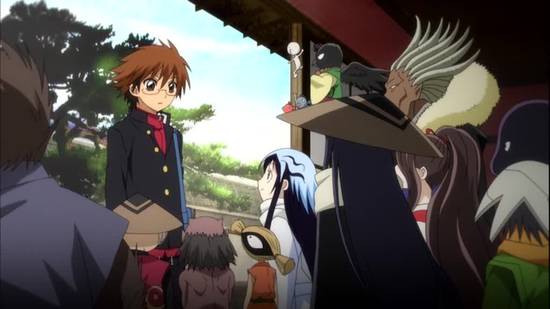
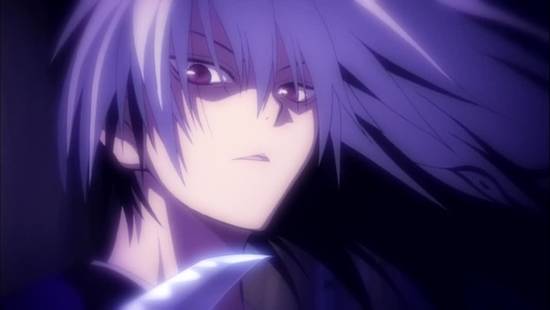
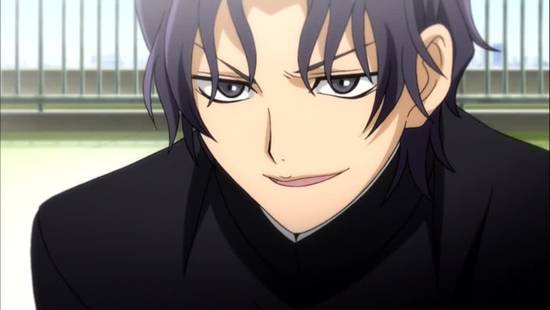
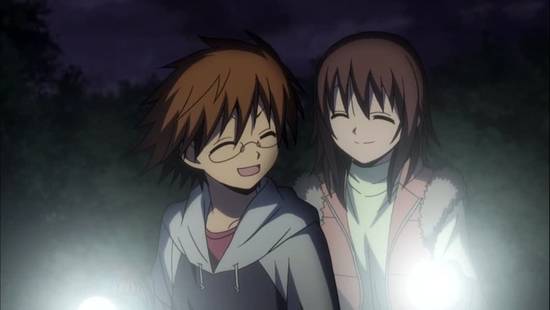
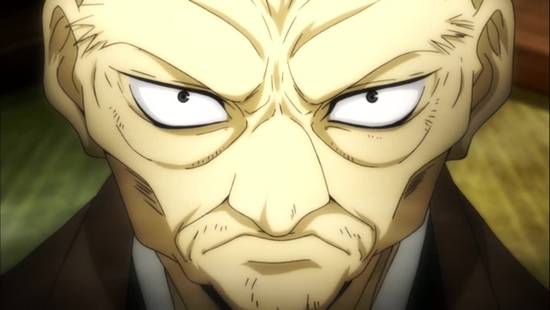

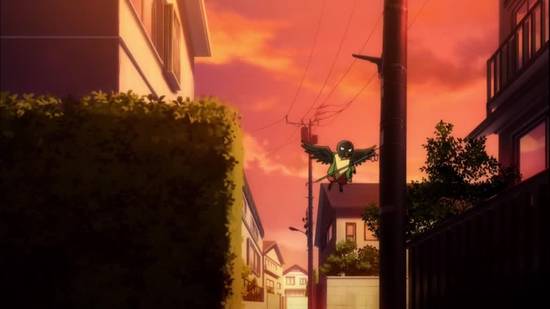
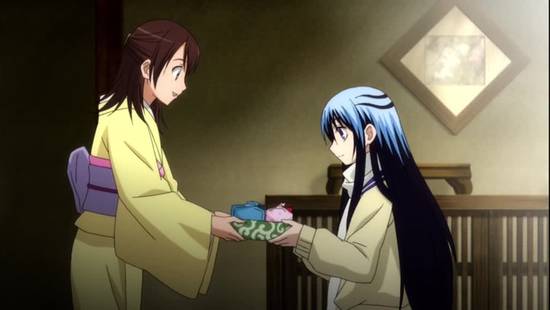
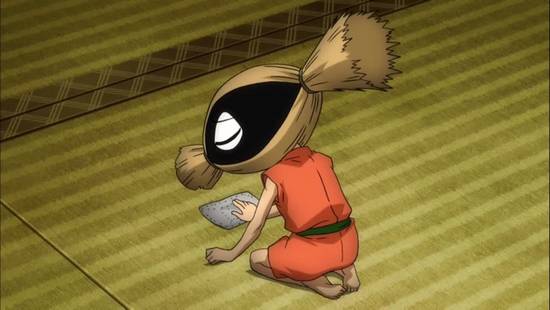
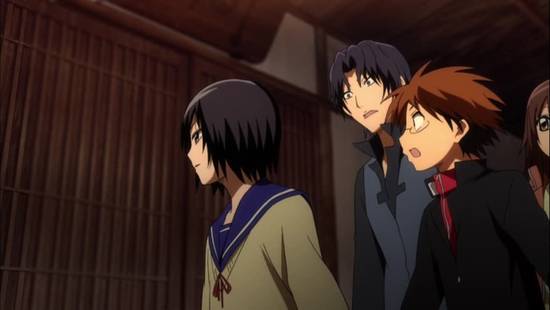
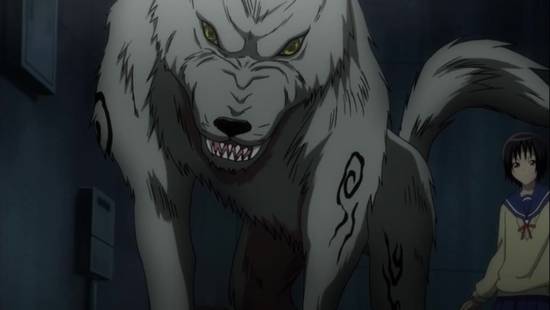
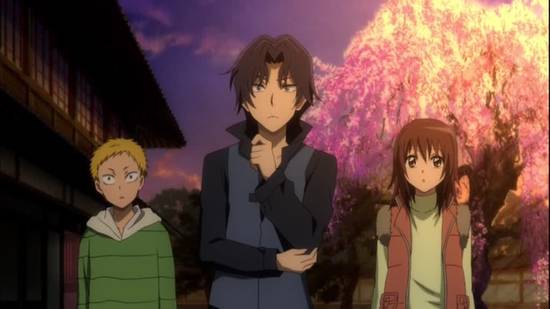
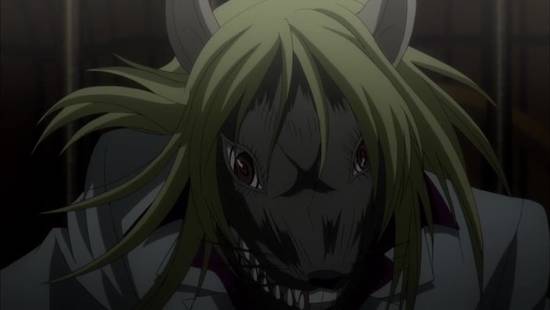
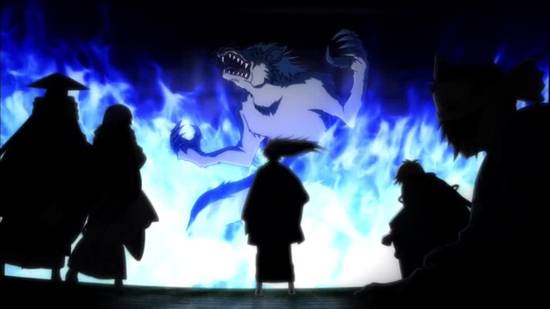
Your Opinions and Comments
Be the first to post a comment!